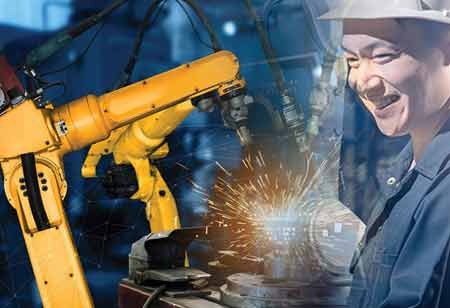Study these safety tips for the chemical industry to witness if your company's chemical hygiene plan needs changes or additions.
FREMONT, CA: Don't risk destructive effects from a chemical accident. Appropriate planning could save innumerable lives and lost work hours. Study these safety tips for the chemical industry to witness if your company's chemical hygiene plan needs changes or additions.
1. Label Everything. Perhaps save a life by properly labeling all chemical containers. Chemicals usually look similar, even to an adept. Check container labeling—everybody should readily notice chemical risks on the exterior of the container. Properly labeled containers will avoid accidents because of mixing inaccurate substances or unsuitable disposal.
Place material safety data sheets (MSDS) in a readily accessible and labeled location. Before functioning with any chemical, a worker should confer the proper MSDS. These sheets provide details on hazards and safety procedures for safely handling the material.
2. Location, Location, Location. Routinely assess the location of every chemical. Check that container of chemicals does not sit near other chemicals they could negatively react with. Additionally, let for proper ventilation and drainage in case of a container break. Proper ventilation in both the storeroom & workspace can ascertain the air quality in both places. Depending on the chemicals used, exhaust vents in a work area might be required.
3. Offer Training and Resources. Don't presume workers know how to impede or react to chemical spills. Train all arriving employees on standard operating procedures (SOPs), including various chemicals. Post information on any topic with chemicals to augment the SOPs. This supports cases when the chemicals need specific handling instructions.
4. Safety Check Emergency Equipment. The OSHA(Occupational Safety and Health Administration) rules need emergency equipment to operate in buildings that store or handle chemicals. An emergency eyewash could hinder blindness in workers who get chemicals in their eyes. A working and recently surveyed fire extinguisher stop small fires from becoming larger. On-site firefighters may need firefighting equipment, like water sources and hoses.
5. Cleanness is Next to Safety. Maintain workstations clean and systematic to avoid accidents. Wet floors encourage falls. Cluttered work areas promote unintentional spills or mixing. To lessen clutter, keep extra chemicals in their actual containers until necessary. Provide workers with a disposal area around their workstations to safely eliminate used chemicals.
Workers must also have admittance to a place to leave work clothes at the ability. Washing machines at work preclude workers from taking home possibly contaminated clothes for cleaning. Guide workers to often change clothes before leaving to avoid possibly revealing their families to chemicals from the facility.
6. Keep Safety Gear in Sight. Safety gear must be worn when in the area to keep employees from chemical exposure. Teach all workers about the location of goggles, respirators, and gloves. Promote workers to use the equipment each time they enter a workspace. Exposure to chemicals can happen when safety gear is neglected. Making it simpler to access safety equipment will guarantee workers use it.
Train all workers to study their safety equipment carefully. Dump any pieces with signs of excessive wear or damage. Jeopardized equipment puts safety at risk.
7. Specify a Location for Food and Drink. Prevent eating and drinking near the work area to prevent workers from accidentally ingesting chemicals. Create a location far from the chemical storage and workplace for eating, drinking, and breaks. Near this position, give workers ready access to sinks and soap for handwashing previously eating or drinking. This washes off any feasible chemical remnant from the hands and can prevent accidental ingestion. Prohibiting food or drinks near the work area is the simplest way to avoid contamination of the chemicals or the food.
8. Establish a Chain of Responsibility. Have a clearly defined chain of command to react in an emergency. Workers at each level of responsibility should operate each shift. Teach each worker whom they should inform if an accident occurs. This requires planning to avoid situations where the proper supervisors don't appear to work. Have a record of alternates as substitutes should someone become ill.

